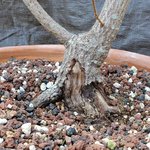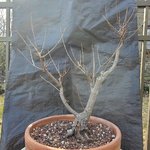palafr01
Yamadori
Hey guys another post here about a troublesome maple that i have. I have had the tree for 7 years and due to a combination of poor soil for a number of years and neglect it has ended up in this sorry state. 2 years ago i placed it in an APL mix to improve the roots but the akadama degraded. So i do plan on repotting it this year and replacing the akadama with fired clay adding some bark.
The biggest question i have is how to go about this material as it is now. I believe using the old back as the new front and hiding the rot in the back is a start, but i could use some advice on improving the nebari in addition to restoring the trunkline. I'd appreciate any advice given.
Note: I purchased the tree from Rosades and it wad likely an airlayer so there isnt much trunk below the current nebari. Also the smaller of the two trunks still can be manipulated if sightly to improve its angle. Pics below.
The biggest question i have is how to go about this material as it is now. I believe using the old back as the new front and hiding the rot in the back is a start, but i could use some advice on improving the nebari in addition to restoring the trunkline. I'd appreciate any advice given.
Note: I purchased the tree from Rosades and it wad likely an airlayer so there isnt much trunk below the current nebari. Also the smaller of the two trunks still can be manipulated if sightly to improve its angle. Pics below.




